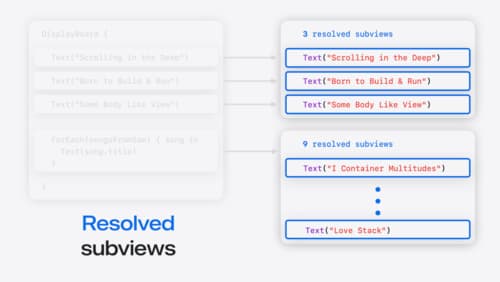child view inside parent view having its own view model as state object
Asked on 2024-09-17
1 search
In SwiftUI, when you have a child view inside a parent view and you want the child view to have its own view model as a state object, you can use the concept of @State and @Binding.
In the session titled "SwiftUI essentials," it is explained that each view can have its own state, which acts as a separate source of truth. However, to synchronize the state between a parent and a child view, you can pass a binding to the child view. This allows the child view to update the state in the parent view, ensuring that both views remain in sync.
For example, if you have a rating view that needs to update a value in the parent view, you can pass a binding to the rating view. This way, the parent view's state becomes the single source of truth, and any changes in the child view will reflect in the parent view as well.
For more details, you can refer to the session SwiftUI essentials (12:29) where this concept is discussed.

SwiftUI essentials
Join us on a tour of SwiftUI, Apple’s declarative user interface framework. Learn essential concepts for building apps in SwiftUI, like views, state variables, and layout. Discover the breadth of APIs for building fully featured experiences and crafting unique custom components. Whether you’re brand new to SwiftUI or an experienced developer, you’ll learn how to take advantage of what SwiftUI has to offer when building great apps.

Demystify SwiftUI containers
Learn about the capabilities of SwiftUI container views and build a mental model for how subviews are managed by their containers. Leverage new APIs to build your own custom containers, create modifiers to customize container content, and give your containers that extra polish that helps your apps stand out.
